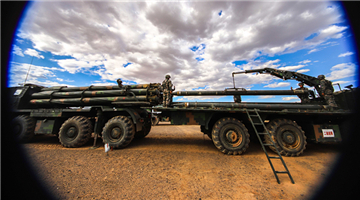China recently successfully tested a solid-fuel engine for the new generation of a medium-sized carrier rocket that could provide sufficient propulsion for the development of launch vehicles using strap-on technology.
Installed with such engines, the new generation of the carrier rocket would operate at a low cost of $10,000 per kilogram, one-half to one-third the average cost of international agencies, the Xinhua News Agency reported citing Zhang Di, deputy head of China Aerospace Science and Technology Corporation's (CASTC) fourth institute.
Developed by CASTC, the two-meter-diameter engine is the most powerful domestically-produced solid-fuel model, Science and Technology Daily reported on Wednesday.
Separated in several segments, the engine is capable of carrying an ample amount of fuel to meet the demand of long launch duration and high thrust, the newspaper said, adding that the reliability of the engine has been greatly increased.
It was the first joint test between the engine and servo system. The success signaled that the engine has already met the principal requirements of the new generation of the medium-sized carrier rocket. Future testing will help further optimize some key technical parameters of the engine, according to the report.
The engine was reportedly developed for the launch of Kuaizhou-21 and Kuaizhou-31, the largest solid-fuelled carrier rockets in the world, Zhang said.
"Kuaizhou-21 could carry more than 200 satellites in one launch," Zhang said, adding that its carrying capacity could surpass SpaceX Falcon 9 rocket.
According to Zhang, Kuaizhou-41 is in its planning stage, and aims at space tourism. The price for a trip to space could be reduced to less than one million yuan ($150,645).











